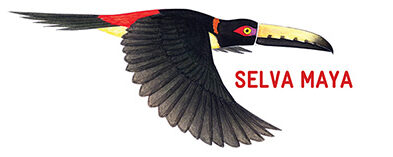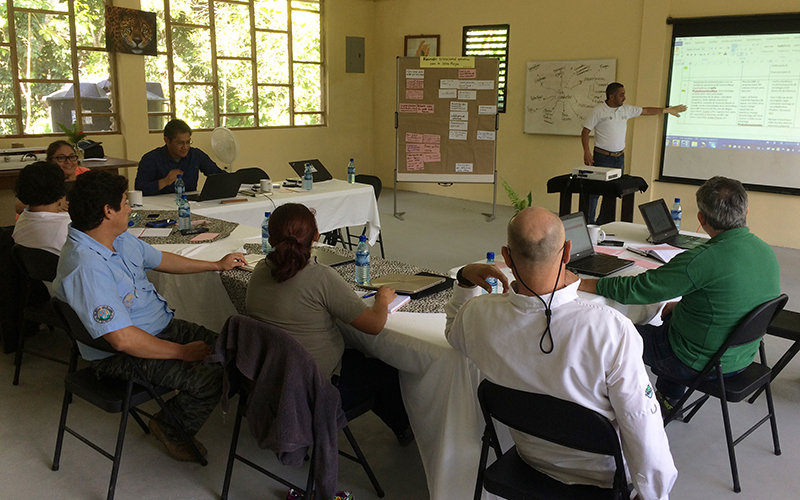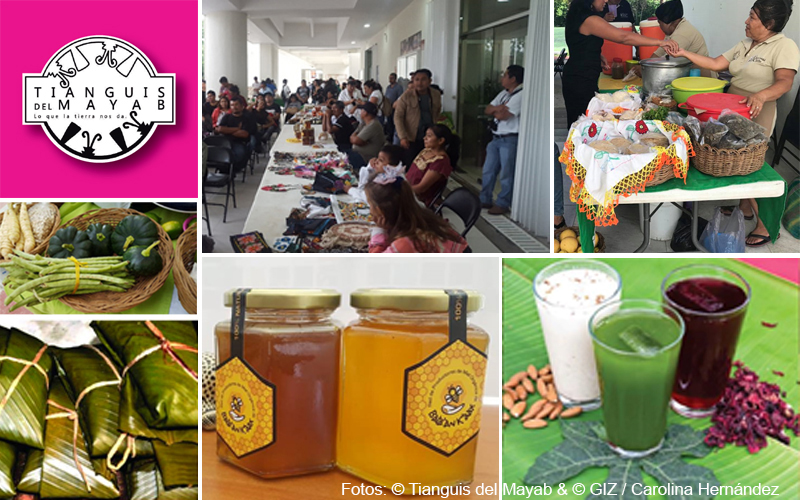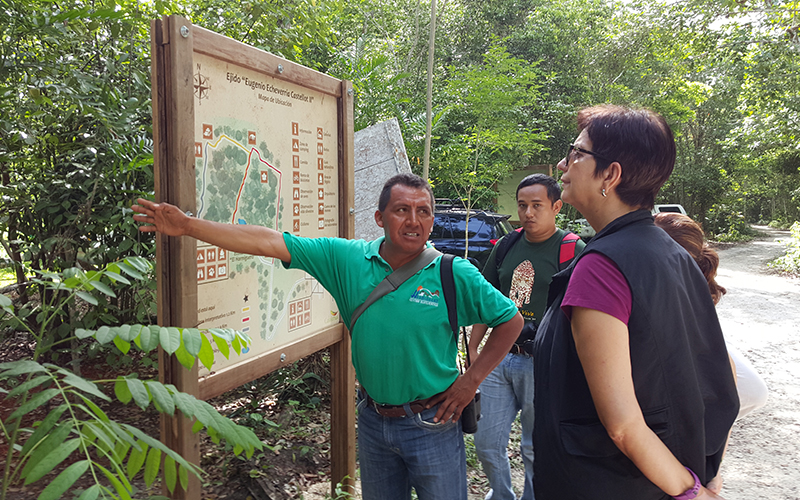Belize, Guatemala and Mexico share the Selva Maya; however, the borders between them set challenges in terms of governance, management and coordination of actions in favor of Protected Areas (PA). That is why the development of regional cooperation mechanisms to promote the permanence and protection of this forest massif is essential for the protection of biodiversity, which obviously recognizes no borders.
The Selva Maya faces different cross-border threats. While an undesirable situation may pop up in the territory of one of the countries that share the Selva Maya, it may get out of control and spread over the territory of the other countries. Some of the most common and recurrent examples are the plundering of natural and/or cultural resources or forest fires generated by uncontrolled agricultural burnings. The lack of surveillance, and therefore the lack of protection of resources in such an extensive area as the Selva Maya, is a challenge to be overcome. That is why adequate coordination among actors is crucial in this context of common borders.
The managers of the protected areas in the Selva Maya are aware of the urgency of mitigating these threats and have already begun to take coordinated actions to help minimize some of their impacts. At the technical level, for example, important progress has been made in planning and implementing joint bi or tri-national patrols at convergent points, which help to monitor natural resources and identify possible environmental illegal actions. These patrols are scheduled in an annual work plan.
To advance the consolidation of joint efforts, natural resources managers in border protected areas (directors, sub-directors, and operational personnel of such protected areas) have formed the Operational Coordination Group of the Selva Maya (GOC), which plans and executes efforts to improve the management of protected areas in the three countries, and also facilitates the transfer of lessons learned that highlight examples of successful management and the promotion of dialogue among peers.
Recognizing the need to increase dialogue between protected areas in border zones and to improve coordination actions for the protection of this forest massif, within the framework of the project “Strengthening the regional strategic and operational cooperation for the protection of the Selva Maya”, which is being implemented by the German Federal Ministry of Economic Cooperation and Development (BMZ); during the first half of 2020, various virtual meetings were promoted that made it possible to identify priority work areas where threats with high transboundary impact prevail, analyze their sources and, based on this, propose coordination mechanisms to mitigate them. A crucial part of this analysis is to recognize that in order to mitigate many of the threats that currently exist at the border level, the support of other bodies with a higher level of incidence is required, such as the Tri-national Strategic Coordination Group of the Selva Maya (GEC), as well as the Ministries of the Environment of Belize, Guatemala and Mexico.
Some of these mechanisms include the design and implementation of protocols and joint work plans, as well as the establishment of a coordination table with a tri-national focus that fosters the exchange of experiences in the management and protection of natural resources, as well as the strengthening of capacities in issues such as fire control, the use of digital tools such as SMART and in the leveling of knowledge in environmental legislation at the tri-national level. Considering the COVID context, it is expected that coordinated actions in border areas can be developed gradually.
“Coordination for the mitigation of transboundary threats is important for maintaining biodiversity and connectivity in the region”.
Yanira Pop, Forest Officer, Forest Department – Belize
“The second largest lung in the Americas after the Amazon is in the border area between Mexico, Guatemala and Belize, so inter-institutional coordination plays a vital role in mitigating anthropogenic impacts in that region. The Operational Coordination Group, made up of multidisciplinary experts who have been working together for more than a decade, contributes to the protection, management, and conservation of the Maya Forest”
Carlos Coutiño, Deputy Director at Calakmul Biosphere Reserve – Mexico
“Regional coordination is key, because it is in these spaces where we can make alliances to address the multiple environmental problems that affect our transboundary Protected Areas. The GOC is the link that facilitates this exchange of information and promotes the participation of relevant actors in strategic issues for conservation”
Wilson Guzman, Former Technical Advisor at CONAP – Guatemala




